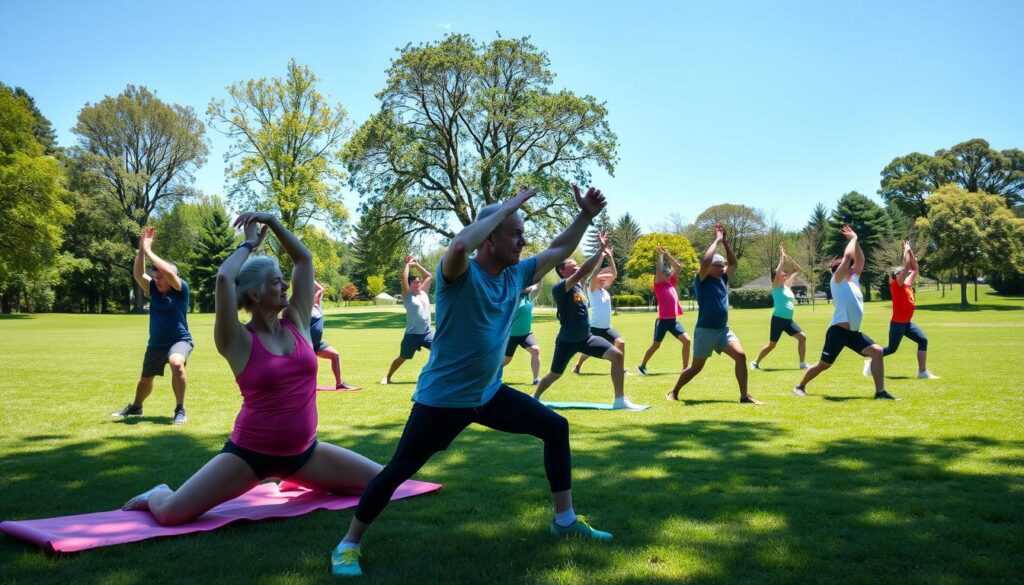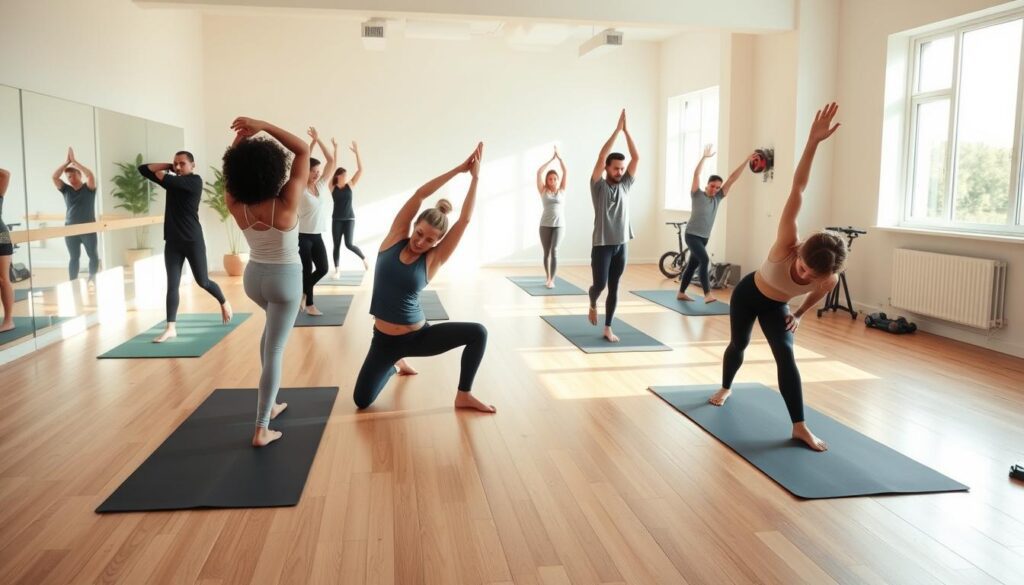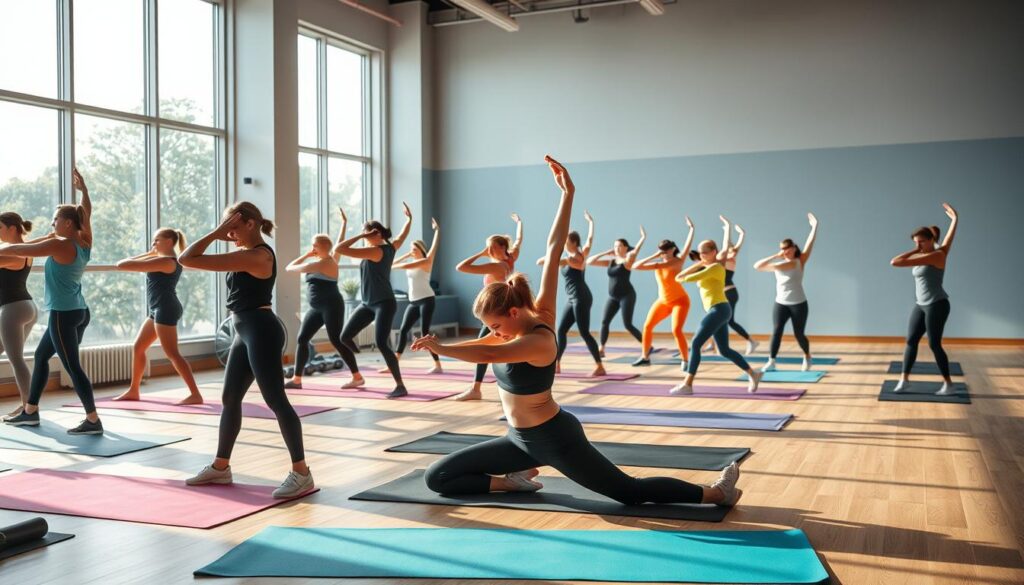Importance of Stretching Before & After Workout
Imagine the feeling of starting your day energized, ready to conquer any challenge that comes your way. Now picture ending your day with that same vitality, unburdened by fatigue or soreness. This is the power of stretching: a simple yet profound practice that often gets lost in the rush of quick workouts and high-intensity training. Recognizing the importance of stretching before and after exercise opens the door to enhanced performance and injury prevention, cultivating not just flexibility but a deeper connection to your body.
We often overlook how stretching acts as the bridge that connects our warm-up to our workout and then into our cool-down. Embracing this routine can make all the difference, not only in improving muscular function and mobility but also in enhancing our mental well-being. Whether you’re a seasoned athlete or simply looking to stay active, integrating stretches into your fitness regimen can be transformative. After all, taking a few moments to elongate those muscles can leave you feeling light and rejuvenated, counteracting the stresses of both physical and emotional demands. In a world where we often prioritize results over the journey, why not give our bodies the care they truly deserve?
Key Takeaways
- Stretching enhances flexibility and range of motion.
- Pre-workout stretching prepares your body for physical activity, improving performance.
- Post-workout stretching aids recovery, reducing muscle soreness and tightness.
- Incorporating stretching into your routine can prevent injuries.
- Regular stretching can lead to improved overall health and well-being.
- Consulting a physical therapist can help develop a personalized stretching routine.
Understanding the Importance of Stretching
Stretching plays a crucial role in physical activity, enhancing performance and helping prevent injuries. The importance of stretching cannot be underestimated for athletes and fitness enthusiasts alike. It prepares the muscles for activity while promoting mobility and flexibility, essential for executing various movements effectively.
The Role of Stretching in Physical Activity
The role of stretching in physical activity extends beyond mere flexibility. Engaging in stretching routines can facilitate increased blood flow to the muscles, improving oxygen delivery and helping with endurance. Dynamic stretches, which mimic the movements involved in sports, enhance core body temperature and prepare the body for rigorous activities. Regular practice, about two to three times a week, is key in reaping the benefits of stretching and ensuring the body remains agile and conditioned.
How Stretching Benefits Muscles and Joints
The benefits of stretching encompass both physical performance and injury prevention. Stretching helps lengthen muscle fibers, enhancing flexibility and range of motion. This not only makes movement smoother but also significantly reduces the risk of strains and sprains. Research indicates that integrating stretching into workout routines can improve muscle performance and mitigate soreness post-workout up to 48 hours after exercising. Techniques like yoga and Pilates serve to enhance flexibility, particularly beneficial in older adults, while foam rolling and dynamic warmups can further prepare muscles for activity.
Why Stretching Before and After Exercise Matters
Engaging in a proper stretching routine is essential for maximizing your workout potential. Understanding the significance of both pre-exercise stretching and post-exercise stretching can lead to safer, more effective exercise sessions. Each type of stretching plays a distinct role in preparing the body and aiding recovery.
Preparing Your Body with Pre-Exercise Stretching
Pre-exercise stretching serves as a critical step in preparing your body for activity. Dynamic stretching, which incorporates active movements, is particularly effective. These movements increase your core body temperature and stimulate blood flow, making your muscles more pliable. While older studies suggested that static stretching could marginally reduce performance temporarily, newer findings indicate that it may not significantly affect overall strength or endurance. A pre-workout routine should primarily focus on dynamic stretches such as lunges and high knees, allowing muscles and joints to loosen effectively, ultimately reducing injury risk.
Cooling Down with Post-Exercise Stretching

Post-exercise stretching provides a necessary cooling-down phase after intense workouts. Spending 30 to 60 seconds on each static stretch can help lengthen muscles and loosen joints. This phase is vital for transitioning the body back to its resting state, combating muscle tightness and soreness. Neglecting this crucial step can lead to tighter muscles over time, which may increase the risk of injury. Pay attention to how your body feels and prioritize this vital practice for improved recovery and long-term health.
Benefits of Stretching: Enhancing Performance and Recovery
Stretching offers numerous advantages that significantly improve athletic performance and recovery times. Incorporating a consistent stretching routine not only enhances movement efficiency but also aids in post-exercise recovery. Understanding these benefits is essential for anyone looking to optimize their physical activities.
Increased Flexibility and Range of Motion
One of the primary benefits of stretching is the increased flexibility it provides. This enhancement leads to a greater range of motion, allowing athletes to perform movements more efficiently. Engaging in regular stretching exercises improves overall functional movement, making it easier to execute various physical activities. Static stretching, which involves holding a position for 10 to 30 seconds, effectively lengthens muscles and tendons, contributing significantly to flexibility gains.
Improved Blood Circulation and Muscle Oxygenation
Adequate stretching before workouts helps increase blood flow and oxygen delivery to muscles. This improved circulation prepares muscles for activity, enhancing overall performance. Additionally, routine stretching after exercise promotes the elimination of lactic acid, which can further accelerate recovery times. Better circulation reduces fatigue, allowing athletes to maintain their peak performance levels during training and competitions.
Reduced Muscle Soreness and Risk of Injury
Incorporating stretching into your fitness regimen can lead to a decrease in muscle soreness. Research indicates that consistent stretching routines help reduce muscle tightness and soreness following workouts. Lack of flexibility often contributes to muscle strains and ligament sprains, so maintaining a regular stretching program is crucial for minimizing the risk of injuries. By ensuring muscles remain elastic, stretching plays a key role in both preventing injuries and facilitating quicker recovery.
Guidelines for Effective Stretching Routines
Establishing an effective stretching routine can significantly enhance your workout experience. Familiarity with the types of stretching, including dynamic stretching and static stretching, is essential for maximizing the benefits. Each type serves a distinct purpose, catering to different stages of your workout.
Types of Stretching: Dynamic vs. Static
Dynamic stretching involves moving parts of your body and gradually increasing the reach or speed of the movement. This type of stretching is ideal for warm-ups, aiming to elevate muscle temperature and enhance blood flow. Common dynamic exercises include lunges, squats, and leg swings. Static stretching, in contrast, is performed while your body is at rest, typically after workouts. It includes stretches like toe touches and the butterfly stretch, aiming to improve flexibility and promote muscle recovery. Holding each stretch for 30 to 60 seconds is key to reaping the benefits of a well-designed static stretching routine.
Creating a Personalized Stretching Routine
Designing a personalized stretching routine can address your unique body needs and fitness goals. Start by identifying major muscle groups, such as calves, hamstrings, and shoulders, to target them effectively. It is recommended to stretch these groups at least 2 to 3 days a week. Incorporate both dynamic and static stretches, using approximately 5 to 10 minutes to warm up before each workout. Post-exercise, dedicate time for static stretches to help tired muscles return to a relaxed state. Adjust the intensity of your routine according to your workout type, ensuring that each stretch is performed comfortably and safely. Following these stretching guidelines will enhance flexibility and decrease the risk of injury.

Stretching for Athletes: Specific Considerations
For athletes, a well-structured approach to stretching can play a pivotal role in optimizing performance. Integrating effective stretching practices into sports training not only enhances flexibility but also aids in injury prevention. Recognizing the right techniques at appropriate times, such as dynamic stretches for warm-ups and static stretches for cool-downs, is crucial.
Incorporating Stretching into Sports Training
Athletes should prioritize stretching as part of their training regimen. Research indicates that static stretching can significantly improve flexibility by altering mechanical factors that influence tissue stiffness. Chronic stretching, performed consistently over days or weeks, offers notable benefits in range of motion and overall flexibility. Combining different types of stretches, like dynamic stretching during warm-ups followed by static stretching post-exercise, can optimize results while minimizing injury risk.
Common Mistakes in Stretching Practices
Many athletes fall into the trap of rushing through stretches, neglecting the importance of quality over quantity. This oversight can lead to increased muscle tightness and elevate the risk of injuries. Post-exercise stretching should not be underestimated, as evidence shows that it can reduce muscle soreness significantly. It is essential to avoid static stretching before high-intensity activities, which may impair performance, rather focusing on dynamic movements instead.
Physical Therapy Insights for Optimal Stretching
Consulting with physical therapists can provide valuable insights tailored to an athlete’s specific needs. Physical therapy insights suggest that an effective stretching program should be individualized, considering factors such as the type of sport, personal limitations, and the specific muscle groups that require attention. Effective routines not only promote flexibility but also support the body’s recovery processes, ensuring athletes remain in peak condition.
Conclusion
Incorporating stretching into your fitness routine is essential for maximizing the benefits of stretching, ensuring both optimal performance and effective recovery. Recognizing the importance of stretching before & after workout sessions helps facilitate better flexibility and overall movement efficiency. By preparing your body with dynamic stretches prior to exercise and cooling down with static stretches afterward, you are actively promoting muscle health and reducing stiffness.
The science around stretching reveals varied opinions on its effectiveness in preventing injuries, especially when discussing its role before physical activity. Although studies have shown mixed results, the consensus remains that stretching contributes positively to athletic performance and can help in muscle recovery post-workout. As such, developing a personalized stretching routine that fits your specific needs can significantly enhance your overall fitness regimen.
Ultimately, embracing the importance of stretching before & after workout routines lays the groundwork for a healthier, more balanced lifestyle. By making stretching a consistent part of your training, you invest in your long-term physical wellbeing, paving the way for quicker recoveries and an enriched workout experience.











